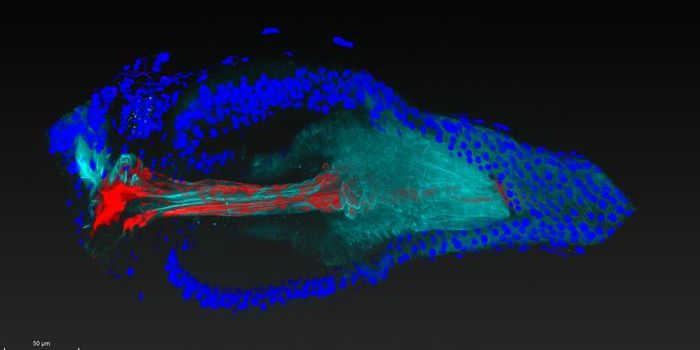SARS-CoV-2 Can Integrate Into the Genome, Cause Positive Tests
The SARS-CoV-2 virus and the illness it causes, COVID-19, have made an indelible mark on our lives. It seems that is also true in more ways than one; new research has shown that when the virus infects cells, portions of the viral genome integrate into the genome of host cells in a phenomenon known as reverse transcription. While this is a relatively rare even for SARS-CoV-2, so many people have been infected with the virus that integration has probably happened many times. Scientists have now used several techniques to show that SARS-CoV-2 can integrate into a host cell genome, and the findings have been reported in the journal Viruses. This study is confirmation of previous work reported in the Proceedings of the National Academy of Sciences in 2021.
This research may help explain why some people continue to test positive for the virus long after their infection has subsided and they have recovered. In reverse transcription, RNA molecules, in this case from SARS-CoV-2, are transcribed into cDNA, a flip of the typical process in which active genes are transcribed into RNA molecules. Those reverse-transcribed cDNA molecules are then stitched into the host cell genome. If some of those cells are captured during a COVID-19 test, PCR would recognize and amplify the viral DNA in the host cell, causing a positive test result.
This study has also shown that simply inserting viral RNA into cells is not enough to cause genomic integration, so it seems unlikely based on the evidence we have now that mRNA from the COVID-19 vaccines would cause integration into cells' DNA.
"This paper puts our data on a very firm footing. Hopefully, it will clarify some of the issues raised in the discussion that followed the first paper, and provide some reassurance to people who were worried about the implications for the vaccine," said corresponding study author Rudolf Jaenisch, a founding member of the Whitehead Institute.
Since the integration of the SARS-CoV-2 genome into cells' DNA is unusual, the researchers had to use a very sensitive method called digital PCR, which detects very specific genetic sequences, to identify instances in which viral RNA had been integrated into the genome of a cell.
The digital PCR results found viral RNA that had been reverse-transcribed to cDNA in about 4 to 20 of every 1,000 cells, but this includes all molecules of the sort, whether they ended up being integrated into a genome or not. Thus, the researchers suggested that viral integration is even more rare than that.
Whole genome sequencing can be used to show when that integration also occurred, because those events are typically accompanied by a reverse transcription complex called LINE1. The LINE1 sequences act as an indicator of integration. However, WGS is usually only used on a handful of cells, so when other investigators looked for those sequences, they could not usually be found.
"Because the human cell genome coverage by whole genome sequencing is very limited, you would need to run the sequencing experiment many times in order to have a good chance of detecting one viral genome copy," explained postdoctoral researcher and first study author Liguo Zhang.
In this study, the researchers created cells that would overexpress LINE1, and make viral integration more common artificially. This time, the digital PCR showed that viral cDNA appeared in fourteen to twenty of every 1,000 cells, and WGS identified instances of integration along with LINE1. Further work with a tool called TagMap confirmed viral integration without overexpressing LINE1.
"This is unambiguous proof of viral genomic integration," Zhang said. When this approach was repeated with cells that were treated with SARS-CoV-2 vaccine, there was no evidence of integration.
"We need to do further testing, but our results are consistent with vaccine RNA not integrating," Jaenisch said.
Sources: Whitehead Institute for Biomedical Research, Viruses









